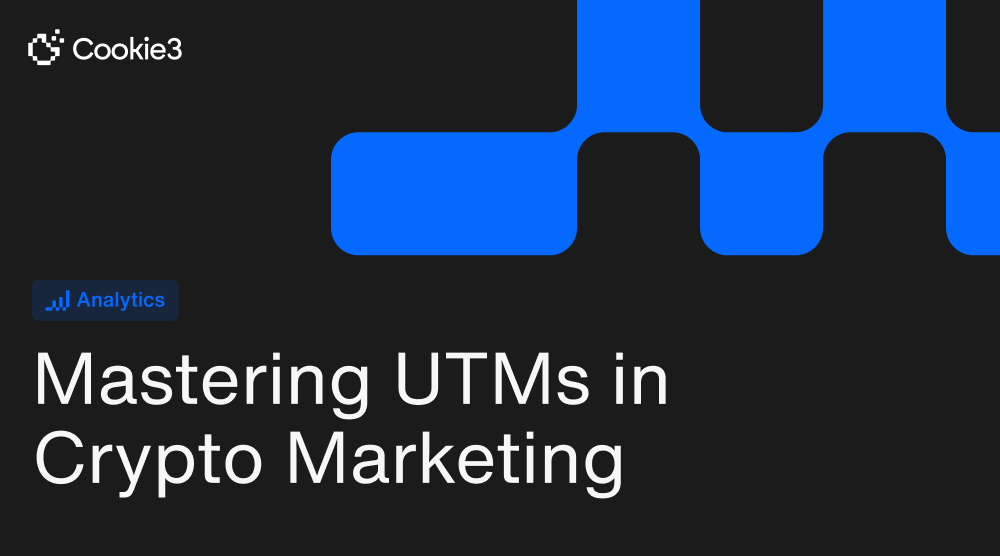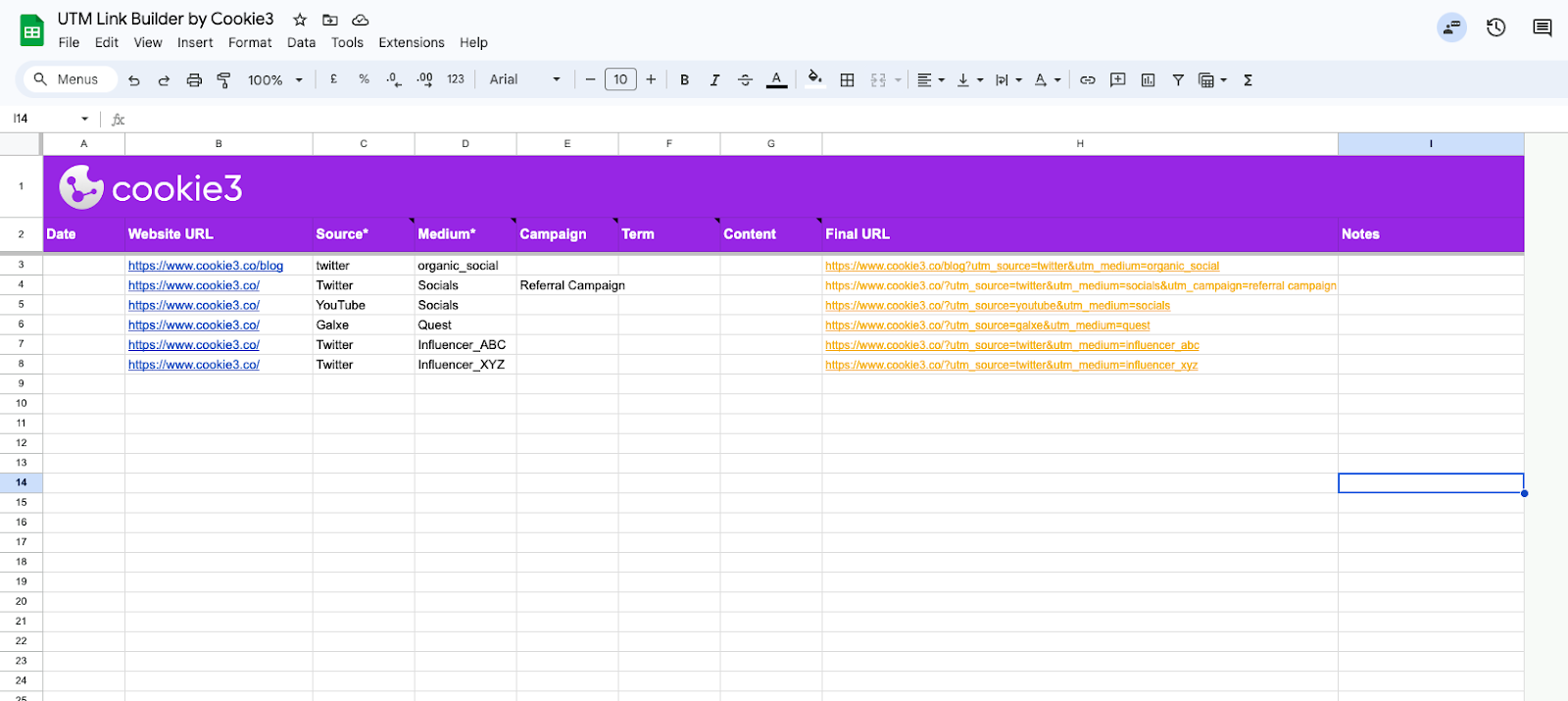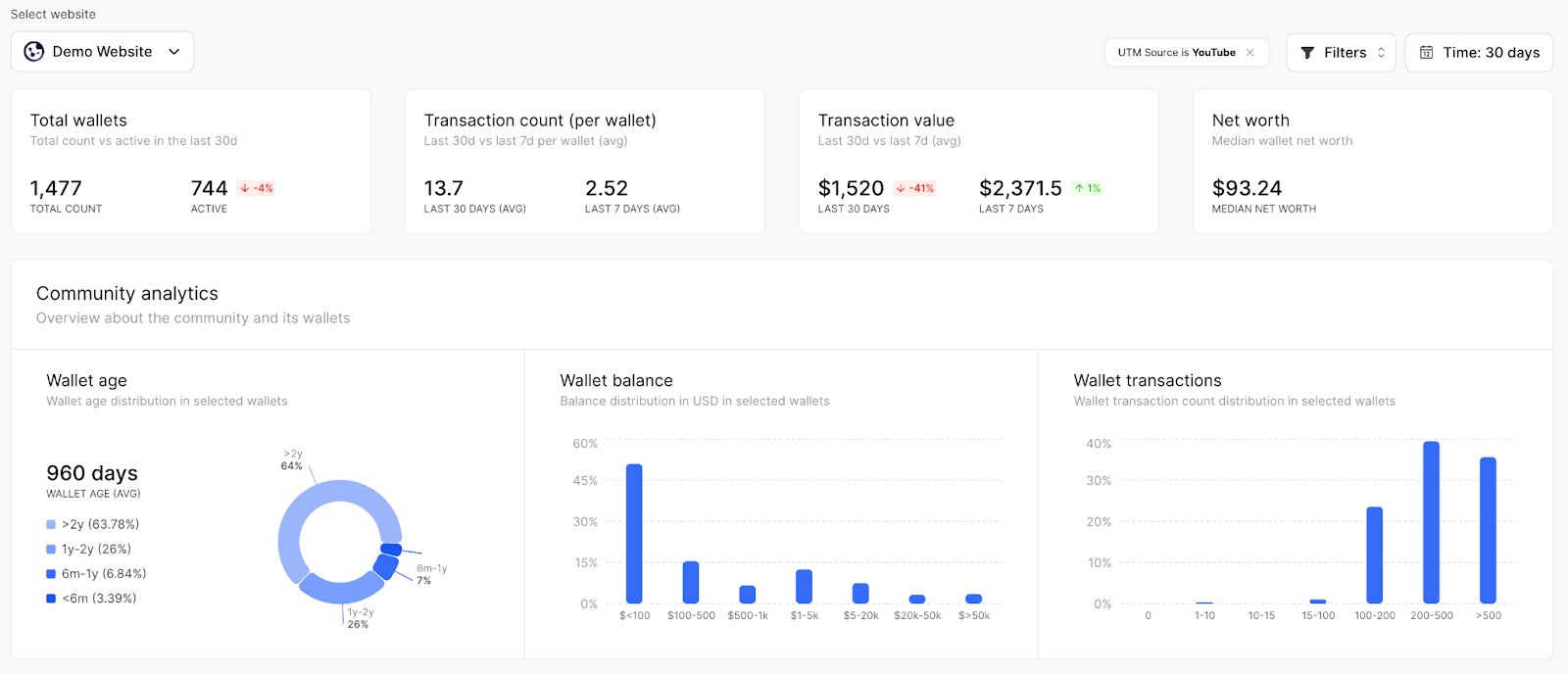

Getting traffic is one thing. Knowing where that traffic comes from (and whether it actually converts) is another story entirely.
In crypto marketing, this becomes even trickier. With offchain campaigns and onchain actions happening in different worlds, marketers often end up making assumptions instead of decisions based on clear data.
That’s where UTM tracking comes in.
This guide covers the basics of UTMs, how to build them properly, and how to connect them with onchain performance data for better insights.
What Are UTMs (And Why Do They Matter in Crypto)?
UTMs (Urchin Tracking Modules) are simple snippets you can add to the end of any URL to track where your traffic is coming from.
In traditional marketing, they’re used to see which campaigns or platforms perform best. In crypto, UTMs become even more powerful when paired with onchain analytics, showing not just who clicked, but who actually took action with their wallet.
Instead of guessing which KOL (Key Opinion Leader), ad, or platform delivered results, you can tie user behavior back to the source.
The Five Key UTM Parameters
There are 5 UTM parameters that you can use:
1. UTM_Source: Identifies the origin of your traffic. For instance, utm_source=twitter tells you that the traffic came from Twitter.
2. UTM_Medium: This parameter specifies the marketing medium used. Example: utm_medium=social indicates the traffic is from a social media channel.
3. UTM_Campaign: It helps you identify a specific campaign. For example, utm_campaign=spring_sale helps you track traffic from your Spring Sale promotion.
4. UTM_Term: This is used mainly for paid search to identify keywords. For instance, utm_term=blockchain_technology could track how well this keyword performs.
5. UTM_Content: This parameter differentiates similar content or links within the same ad. For example, utm_content=sidebar_link or utm_content=header_link can tell which link was more effective in the same campaign.
How to create UTMs?
There are two common methods you can use to create UTM-tagged links:
1. Google Sheets Template
Using a spreadsheet is a great way to ensure consistency across your team.
You can use this free UTM Link Builder Template to:

- Enter campaign parameters manually
- Generate links automatically
- Maintain naming consistency and track links at scale
2. Cookie3 Campaigns Tool
For users managing multiple campaigns, Cookie3 offers a built-in Campaigns feature that automates link creation and tracking in one place.
Simply choose your campaign, input your parameters, and generate a UTM-tagged URL that tracks both offchain and onchain performance.
Why UTMs Alone Aren’t Enough in crypto
While UTMs give a great picture of click-through traffic, they don’t show what happens after that. In crypto, what really matters is onchain behavior.
Here’s a quick example:
- Influencer A: 1,000 website visits
- Influencer B: 2,000 website visits
At first glance, it looks like Influencer B is winning. But now factor in onchain conversions:
- Influencer A: $25,000 in token swaps
- Influencer B: $3,000 in token swaps
The real MVP? Influencer A. Without onchain context, that insight would be lost.
Pairing UTMs with OnChain Analytics
This is where Cookie3 adds value. By tying UTM data to onchain behavior, you can:

- Measure wallet-level conversions tied to specific campaigns
- Track token swaps, NFT purchases, staking, and dApp interactions
- Analyze wallet demographics: value, history, assets, and behavior
This approach helps identify which channels deliver high-quality users, not just traffic volume.
It also helps you:
- Compare the performance of influencers or ad networks
- Identify which user segments engage long-term
- Allocate marketing budgets more effectively
Final Thoughts
UTM tracking is one of the most underrated tools in crypto marketing. When paired with onchain analytics, it becomes a powerful way to measure impact across every touchpoint.
From link clicks to wallet actions, this level of visibility is essential for scaling campaigns, optimizing spend, and proving ROI in a transparent, data-backed way.
Want to streamline your campaign tracking? Cookie3 helps connect the dots between traffic and onchain outcomes, so you can focus on what actually drives results.
{{cta-element}}